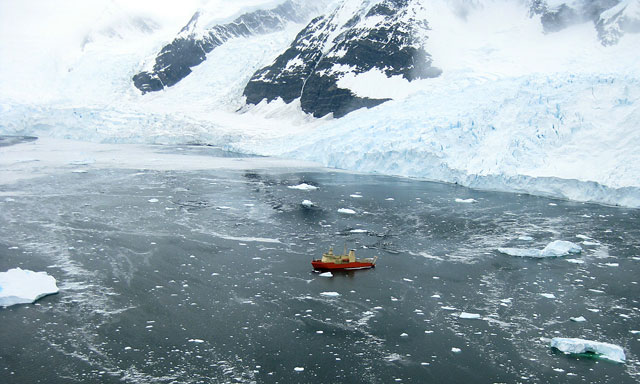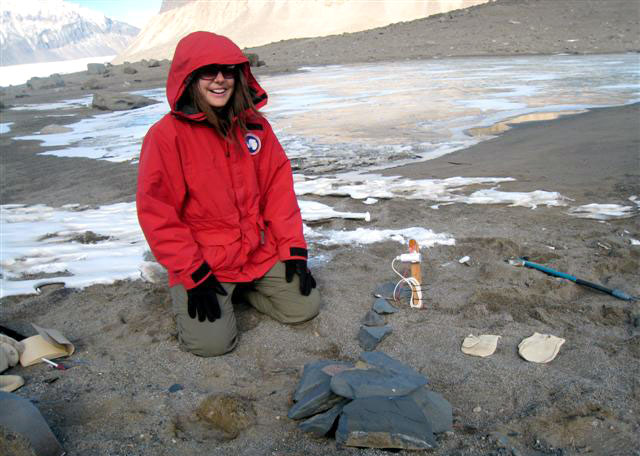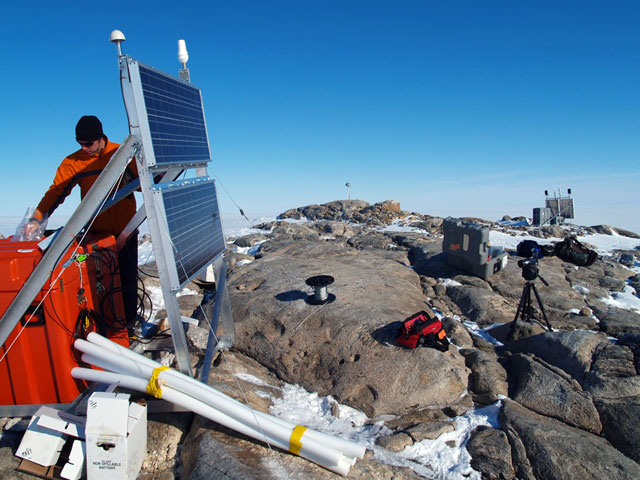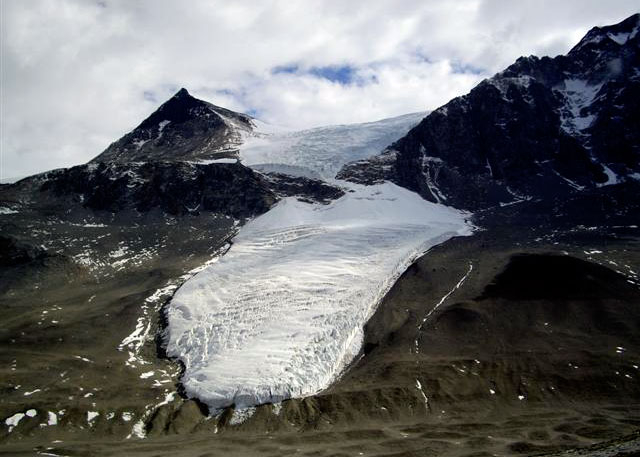Lessons and legaciesNew IPY report captures far-reaching results from historic research campaignPosted June 1, 2012
Three years after its official end, the groundbreaking discoveries of the International Polar Year (IPY) A prepublication copy of the synthesis report, Lessons and Legacies of the IPY 2007-08, was released last month by the National Research Council (NRC) “One of the themes of the report is certainly that what happens at the poles doesn’t stay at the poles. It has global implications,” said Julie Brigham-Grette “It’s really important for societies in the lower latitudes to understand that the whole world is changing, and the polar regions will have an effect on everyone,” Brigham-Grette added during an hour-long webinar hosted by the NRC in early May. The International Polar Year 2007-08 officially lasted two years, from March 2007 to March 2009, though some projects are still active today, with analysis of IPY data expected to continue for several more years. 
Photo Credit: Eugene Domack
The USAP research vessel NATHANIEL B. PALMER sails in support of the LARISSA project, an IPY program studying the effects of disappearing ice shelves around the Antarctic Peninsula.
The research campaign brought together more than 50,000 scientists, local residents, educators, students, and support personnel from 60 nations and numerous scientific disciplines. IPY accounted for 228 projects. Its lineage includes two previous International Polar Years in 1882-1883 and 1932-1933, and the International Geophysical Year (IGY) “IPY was big on the international stage,” said Robert Bindschadler Bindschadler said during the May 2 webinar that the impacts of IPY go beyond the scientific discoveries, which ranged from the first high-resolution images of an Alps-sized mountain range beneath the East Antarctic Ice Sheet to new paleoclimate records in the Arctic that show recent warming has reversed the cooling trend of the last 2,000 years. “One of the primary objectives of the IPY was to inspire the next generation and the young among us who should be more aware of the polar regions, get interested in the polar regions, and hopefully some of them will become the next generation of polar scientists and engineers,” Bindschadler said. For example, in 2006, the Association of Polar Early Career Scientists (APECS) “They just burst on the stage,” Bindschadler said. IPY also engaged more female researchers. 
Photo Credit: Margarita Marinova/Antarctic Photo Library
Researcher Jen Heldmann conducts an experiment in the McMurdo Dry Valleys. IPY saw more female principal investigators involved in the polar regions.
More than 10 years ago, less than 20 percent of project principal investigators (PIs) were women. During IPY, that number increased to a quarter of PIs or co-PIs, according to the report. Women were virtually absent from the scene during the IGY. “Polar research is emerging as an ever larger, relevant part of Earth science, of climate change science,” Bindschadler noted. “We need more polar researchers. IPY certainly put a lot of effort — and I think had a lot of success — in inspiring new people to consider polar research.” Brigham-Grette discussed a handful of the scientific discoveries and results that emerged during IPY, noting, “We really confirmed on many different levels … that the polar regions are changing faster than anyone predicted.” She said researchers have observed severe changes in Arctic sea ice cover, including a 27 percent loss in 2007, and have documented that seven out of 12 ice shelves around the Antarctic Peninsula region are in decline or have simply disappeared. “We’re seeing this really rapid loss of these ice shelves,” she said. “What’s important is that these ice shelves, of course, buttress the ice behind it and provide a kind of plug to the rapid outflow of the ice sheet behind.” Sea-level rise, which scientists expect to be driven from ice loss in Greenland and the Antarctic over the next century, is currently at 3 millimeters per year. “It may not sound like much, but it can really accumulate a lot, and is the basis for some of the forecasts for at least a meter of sea-level rise in the next 90 years or so,” Brigham-Grette said. Research during IPY went beyond climate change science. Scientists identified new marine and terrestrial species, habitats, and ranges and greatly expanded the understanding and awareness of polar biodiversity and invasive species, according to the report. “For example, the Southern Ocean Global Ocean Ecosystems Dynamics (SO GLOBEC) Program “Better understanding of Antarctic and Arctic ecosystem dynamics has in turn spurred new initiatives aimed at managing human activities in the oceans with an eye toward protecting biodiversity and maintaining ecosystem functions as these ecosystems undergo profound transformations due to climate change,” the report stated. “This IPY was different because instead of just looking at the physical aspects of the polar regions, this included the biology and polar ecosystems in ways that were not carried out before,” Brigham-Grette noted. 
Photo Credit: Seth White/POLENET
A scientist installs a GPS station in West Antarctica as part of the POLENET program.
IPY also spurred new investments in infrastructure and instruments. One high-profile project was the POLENET program “This new network is really an important legacy. People are also coming up with new ways to use this network of information,” Brigham-Grette said. “It points to the international aspect of the IPY.” Bindschadler said NSF commissioned the report to document U.S. participation in IPY. Congress had allocated $60 million specifically for IPY, he said, but many of the projects that occurred between 2007 and 2009 were considered to be part of the effort. The NASA glaciologist noted that IPY represented a maturation for polar research in terms of its prominence in science today. “It’s not just basic research anymore,” he explained. “The research, by and large, is dominated by the need to have some application or some relevance to society. “I think everyone agrees that the poles are in a unique position right now,” he added. “They’re on the front line of climate change. The magnitude of change, the pace of change, exceeds that of anywhere else on the planet.” |



For USAP Participants |
For The Public |
For Researchers and EducatorsContact UsU.S. National Science FoundationOffice of Polar Programs Geosciences Directorate 2415 Eisenhower Avenue, Suite W7100 Alexandria, VA 22314 Sign up for the NSF Office of Polar Programs newsletter and events. Feedback Form |


